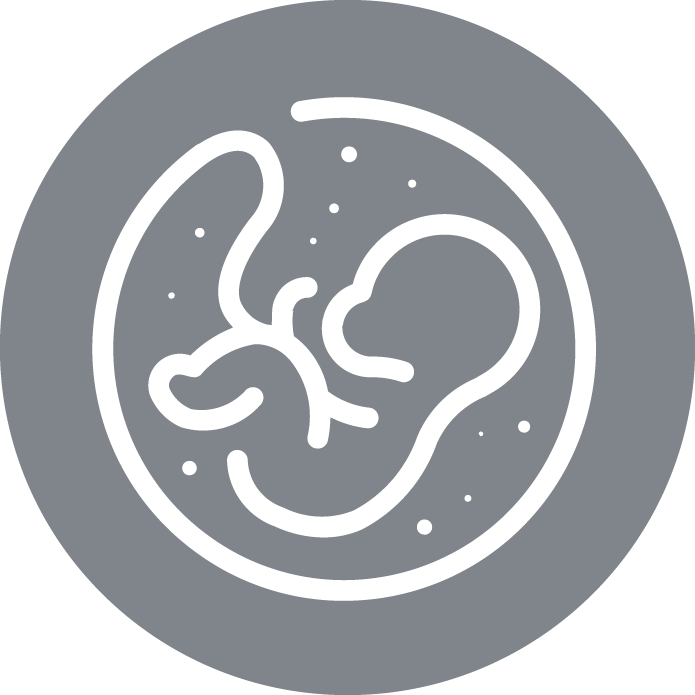Egg Vitrification: Advances, Innovations, and the Future of an Essential Technique in Reproductive Medicine
Egg vitrification has become one of the most significant advancements in the field of reproductive medicine over the past two decades. Since its introduction, the technique has revolutionized infertility treatment and fertility preservation, allowing millions of women around the world to preserve their eggs for future use, when they choose to become mothers. This breakthrough is one of the key topics covered in an online master's in assisted reproduction. But what exactly does vitrification mean, and how has this process evolved to deliver better outcomes?
In this article, we will explain the latest advances in egg vitrification, its benefits, how cryoprotectants have influenced the technique’s effectiveness, and its promising future with automation and artificial intelligence (AI). We will also explore improvements in oocyte vitrification and the new processes that are transforming this technique into an even more effective tool in fertility treatments.
What is egg vitrification?
Egg vitrification is a rapid freezing process that efficiently preserves human eggs while maintaining their biological characteristics and their ability to be fertilized in the future. Unlike traditional freezing techniques, which involve the formation of ice crystals, vitrification avoids this problem by turning the eggs into a solid, glass-like amorphous state without crystal formation.
This process has proven to be extremely effective in preserving oocytes for later use in in vitro fertilization (IVF) treatments, offering success rates comparable to those of fresh eggs. Through vitrification, eggs can be stored for years without compromising their quality, giving women the opportunity to preserve their fertility for personal or medical reasons.
How has the vitrification process improved?
Reduced exposure to cryoprotectants
One of the main advances in egg vitrification has been the optimization of cryoprotectants—substances that protect cells during the freezing process. Previously, conventional protocols required prolonged exposure to these products, increasing the risk of toxicity and cellular stress. In recent years, the exposure time to cryoprotectants, especially during the equilibration and warming phases, has been significantly reduced.
Rapid equilibration and warming
New techniques have made it possible to shorten the exposure time during equilibration and warming to just one minute, reducing the possibility of cellular damage. This process, which used to take up to 15 minutes, has proven to be more efficient by minimizing osmotic stress in oocytes and improving cell viability.
Innovations in cryoprotectant use
The use of new cryoprotectants has been another crucial advancement in oocyte vitrification. Researchers have developed more effective compounds that reduce the toxicity of the substances used without compromising the efficiency of the freezing process. These innovations are significantly improving the survival rates of vitrified eggs once thawed, increasing the chances of success in fertilization treatments.
The Future of Vitrification: Automation and Artificial Intelligence
Automation for greater precision and reproducibility
Automation is another advancement that is transforming egg vitrification and is studied in depth in programs such as the Master's in Biotechnology of Human Assisted Reproduction. With the implementation of automated devices, greater precision is being achieved throughout the entire freezing process—from the collection of oocytes to their storage in liquid nitrogen. This not only improves the reproducibility of results but also reduces variability between laboratories, ensuring greater consistency in treatments.
Benefits of automation in vitrification:
- Reduced human error: Automation minimizes errors during the process, ensuring each step is carried out accurately.
- Better temperature control: Automated systems can maintain stricter control over temperatures, which is essential during freezing and thawing.
- Increased efficiency: Automation speeds up the vitrification process, allowing a higher number of samples to be processed.
Artificial Intelligence to predict egg viability
The use of artificial intelligence (AI) in egg vitrification is another promising area that is revolutionizing reproductive medicine. Through advanced algorithms, AI can analyze key characteristics of vitrified oocytes to predict their developmental potential once thawed. This enables doctors to make more informed decisions about how many eggs to vitrify, improving fertilization success rates and reducing the likelihood of failed cycles.
Applications of AI in vitrification:
- Oocyte quality analysis: AI can analyze the morphology of eggs to predict their fertilization capacity.
- Personalized treatments: By integrating AI, treatments can be better tailored to each patient’s individual characteristics.
- Improved outcome prediction: AI helps forecast the success of fertilization cycles, offering more accurate prognoses.
Benefits of Egg Vitrification
Egg vitrification offers numerous benefits for women seeking to preserve their fertility and for couples who require in vitro fertilization (IVF) to conceive. Some of the main benefits include:
- Fertility preservation: Vitrification allows women to store eggs at a younger age, preserving their reproductive potential for the future, especially in cases of illnesses such as cancer or personal decisions related to delayed motherhood.
- Better control over timing: Women can choose the ideal time to become mothers, without relying on immediate biological factors.
- Higher success rates in IVF: Vitrification improves the success rates of fertilization treatments by preserving the quality of the eggs for later use in IVF.
The Impact of Egg Freezing on Reproductive Medicine
Egg freezing has enabled remarkable advancements in infertility treatment. Vitrified eggs offer a more effective and safer alternative to traditional freezing techniques, leading to increased use among patients looking to preserve fertility for medical reasons and women choosing to delay motherhood for personal reasons.
The impact of egg vitrification has also been pivotal in improving success rates in in vitro fertilization treatments, as the quality and viability of vitrified eggs have outperformed those frozen using older methods.
Egg vitrification is a technique that has significantly evolved over the last two decades. Advances in cryoprotectant use, automation of the process, and the integration of artificial intelligence in reproductive medicine are paving the way for future improvements, allowing for even more efficient and personalized outcomes.
With the optimization of these processes and continued technological innovation, egg vitrification is positioning itself as one of the most effective tools in fertility preservation and in vitro fertilization treatments, offering greater opportunities for women who wish to become mothers in the future—regardless of their current circumstances.



